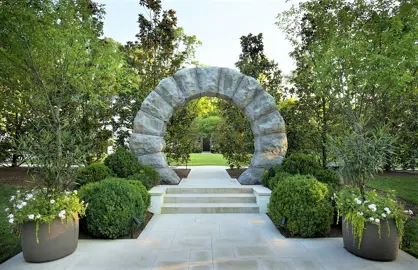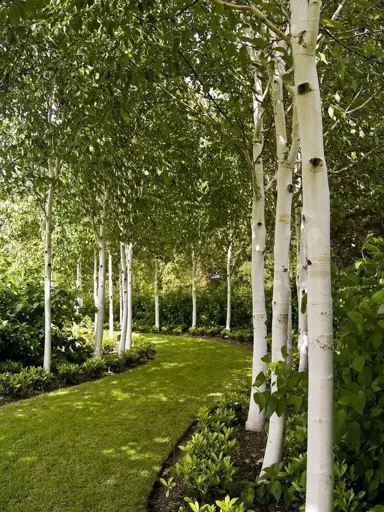
The Plant Company grows, sells, and ships Taxodium trees throughout NZ. We pride ourselves on producing high quality plants and seeing the joy from our customers when they receive them. We do hope you enjoy them and support this NZ business that is passionate about Taxodium trees.
Taxodium distichum Cascade Falls is a variety of the commonly known, Swamp Cypress, and is a fabulous weeping tree that will tolerate heavy soils...
Taxodium distichum, commonly known as the Bald Cypress or Swamp Cypress, is a conifer that grows as an upright tree to about 30 m tall and 8 m wide...
Taxodium Mclaren Falls is a variety of the commonly known, Swamp Cypress, and is a fabulous weeping tree that will tolerate heavy soils. The rich...
Taxodium Mexicanum, commonly known as the Mexican Swamp Cypress, is a fabulous tree that will tolerate heavy soils. The rich green, somewhat feathery...
Taxodium mucronatum, commonly known as the Montezuma Cypress, is a large and stately, evergreen tree native to Mexico. It has a broad, spreading...
Growing colourful trees in your garden delivers a vast range of benefits:
We have the largest variety of Swamp Cypress trees, and we have the right one for your space. Our Taxodium trees have been selected to thrive in NZ’s climate. We grow and stock only the highest quality plants, sourcing them locally, and from NZ’s leading nurseries. Each plant is packed and transported with extreme care, ensuring it arrives to you in the same condition it was in when it left the nursery. If you are wanting to buy Taxodium trees, shop with confidence from the best in the industry.
Bald cypress trees (Taxodium distichum) are moderately fast-growing trees, typically adding 1 to 2 feet (0.3 to 0.6 meters) in height each year. They can reach a mature height of 60 to 80 feet (18 to 24 meters) with a spread of 20 to 25 feet (6 to 7.5 meters).
The growth rate of bald cypress trees can vary depending on several factors, including soil conditions, sunlight exposure, and water availability. In ideal conditions, bald cypress trees can grow up to 3 feet (0.9 meters) per year. However, in poor conditions, their growth rate may be as slow as 0.5 feet (0.15 meters) per year.
Bald cypress trees (Taxodium distichum) are native to the southeastern United States, ranging from Delaware to Texas and as far west as the Mississippi River. They are typically found in swamps, along riverbanks, and in other wet areas.
Here are some specific locations where you can find bald cypress trees:
Taxodium distichum, commonly known as bald cypress, is a deciduous conifer, meaning it loses its leaves in autumn. This is in contrast to most other conifers, which are evergreen and retain their needles year-round.
The deciduous nature of bald cypress trees is an adaptation to their wetland habitat. In the fall, when the days get shorter and the temperatures drop, the trees shed their leaves to conserve water and protect themselves from frost damage. The bare branches of the trees also allow sunlight to reach the ground, which helps to promote the growth of new plants.
Yes, bald cypress trees (Taxodium distichum) are considered slow-growing trees. They typically add 1 to 2 feet (0.3 to 0.6 meters) in height each year. This means that it can take them many years to reach their full mature height of 60 to 80 feet (18 to 24 meters).
The slow growth rate of bald cypress trees is due to a number of factors, including their wetland habitat, their dense wood, and their long lifespan. In wetland environments, where resources can be limited, bald cypress trees have evolved to conserve energy and grow slowly. Their dense wood, which is resistant to rot and decay, also contributes to their slow growth rate. Additionally, bald cypress trees are known for their long lifespan, often living for hundreds of years.
Bald cypress trees (Taxodium distichum) are known for their long lifespans, often living for hundreds of years. The oldest known bald cypress tree is located in Big Cypress National Preserve in Florida and is estimated to be over 600 years old.
Several factors contribute to the longevity of bald cypress trees:
Bald cypress trees are known for their longevity and resilience, often living for hundreds of years. However, even these hardy trees can succumb to various factors that can lead to their decline and eventual death.
Here are some of the possible reasons why your bald cypress tree might be dying:
If you notice signs of decline in your bald cypress tree, such as yellowing or browning of foliage, stunted growth, or dieback of branches, it is important to identify the underlying cause promptly. Consulting with a professional arborist or tree care specialist can help you diagnose the problem and develop an appropriate treatment plan.
The genus Taxodium belongs to the cypress family, Cupressaceae. It comprises three species of deciduous conifers native to North America and Asia:
Taxodium trees are characterized by their deciduous nature, which is unusual among conifers. They typically grow in swampy or wetland habitats and have adapted to tolerate flooding and poor drainage. Their wood is resistant to rot and decay, making it valuable for construction and other purposes.
Bald cypress trees (Taxodium distichum) are known for their unique characteristics and adaptability, making them a popular choice for landscaping and conservation projects. Here are three distinguishing features of bald cypress trees:
In addition to these three key characteristics, bald cypress trees are also valued for their longevity, often living for hundreds of years, their resistance to pests and diseases, and their aesthetically pleasing form. They provide shade, privacy, and a sense of tranquility to landscapes, making them a versatile and desirable tree species.
The male cone of Taxodium, also known as the pollen cone or staminate strobilus, is a small, slender structure that produces pollen for reproduction. It typically appears in clusters on the branch tips during early spring. The male cone is composed of numerous spirally arranged scales, each bearing several pollen sacs. When mature, the scales open, releasing the pollen grains into the wind to fertilize female cones.
Here are some key characteristics of Taxodium male cones:
The presence of male cones is an important indicator of the reproductive maturity of Taxodium trees. Their timely pollination is crucial for the production of seeds and the continuation of the species.
Whether you need assistance finding the plant you’re looking for or you simply want to know more about who we are and what we do, we invite you to get in touch with us today. A member of The Plant Company team will get back in touch as soon as possible.


